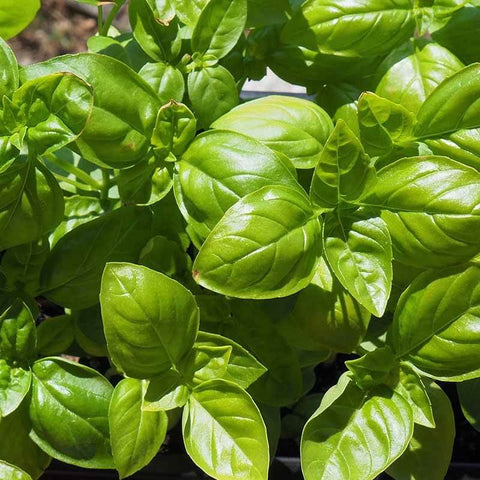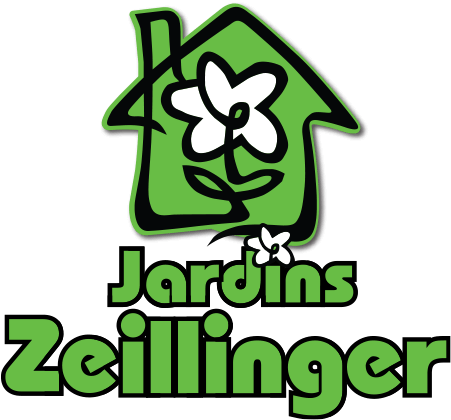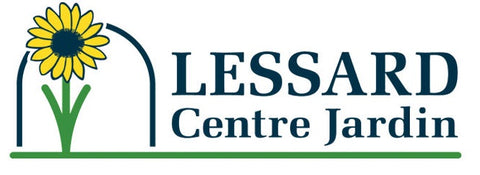

Hortinova
GENOVESE - Open Pollinated Basil Seeds
Ocimum basilicum
- Excellent variety for growing in gardens and pots.
- Its very fragrant green leaves have an inimitable spicy taste.
- Tall and relatively slow to bolt with large, dark green leaves about 3" long.
- This is the traditional Italian heirloom variety of basil used in the preparation of pesto.
Basil seeds usually germinate within 7 to 14 days if kept in a warm environment with temperatures around 70-85°F (21-29°C). If sowing indoors, start the seeds indoors 6 to 8 weeks before transplanting outside. Sow the seeds about 1/4 inch deep and lightly cover them with soil. Water the seeds gently to keep the soil moist but not waterlogged. Alternatively, you can sow basil seeds directly in the garden after the last frost date, when the soil has warmed up to at least 50°F (10°C)—preferably around 70ºF (21°C) for best growth. Nighttime temperatures shouldn’t drop below 50°F (10°C). Choose a sunny location for your basil plants, as they thrive in warm and well-drained soil.
TRANSPLANT: If growing basil indoors, wait until after the last frost before moving them outside. Once the seedlings have grown to about 3-4 inches in height and have developed their first set of true leaves, they are ready for transplanting. Space the basil plants about 12-18 inches apart to allow them enough room to grow and spread.
WATER: Basil prefers consistent moisture, so water the plants regularly, especially during dry periods. However, avoid overwatering to prevent root rot.
FEED: Soil should be moderately fertile and moist but well-draining. Use a balanced, water-soluble fertilizer every 2-3 weeks to provide essential nutrients for healthy growth. Avoid over-fertilization, as it can lead to excessive leaf growth with less flavor.
PRUNE: Regularly pinch off the top leaves of the basil plant to encourage bushier growth and prevent flowering. Flowering can negatively impact the flavor of the leaves.
PROTECT: Use mulch around the plants to retain soil moisture and minimizes weeds around the plants. Watch out for common pests such as aphids and spider mites. Use natural or organic pest control methods to manage infestations. Basil can be susceptible to diseases like downy mildew, so ensure proper air circulation and avoid overhead watering.
Start picking the leaves of basil as soon as the plants are 6 to 8 inches tall. Cut the stems just above a leaf node to encourage further growth. For the best flavor, harvest basil in the morning when the oils are most concentrated. Regularly harvesting promotes continuous growth and prevents the plant from going to seed too quickly.
Let customers speak for us
from 23 reviewsWe grow several varieties of various colours of tomatoes, and the contrast of these tomatoes with other colours is fantastic. We've had a very long season with our plants, excellent disease resistance, great flavour.

This review applies to all of the seeds I purchased from Hortinova - beautiful tomatoes, good disease resistance and excellent production. Our field season extended to 10 weeks. We've had comments of excellent flavour from our customers as well, highly recommend any Hortinova seed.

This tomato is good taste tomato. Small red round tomato. Bigger then cherry tomatoes but smaller then regular one. I like it. Perfect for salads and fresh eating. Ordered seeds for next season.

2nd time ordering. Very satisfied with qualify and result. Thank you

BALCONY YELLOW F1 - Hybrid Cherry Tomato Seeds

Delivered very fast, packed very good, in professional condition and quality. Thanks

DUETT - Open Pollinated Radish Seeds

We will see what they are like this summer.

Type crimson de bonne grosseur avec une superbe uniformité et très hâtif. Un des premiers prêt en saison. Semences très petites et peu nombreuses. Goût très sucré et chaire croquante. Chair passant du rose au rouge en cours de saison. Les plants sont forts et très vigoureux avec des grosses feuilles.

Vigueur des plants impressionante avec des fruits résistants aux fissures et aux dommages. Très bonne conservartion et goût très sucré lorsque les nervures deviennent orange. Peu être récolté lorsque les nervures sont vertes également. Cavité des semences très compacte et petite laissant beaucoup de chair.

Melon qui fond en boûche avec un goût se rapprochant du melon miel et du cantaloup à la fois, très sucré. Faire attention aux irriguations lorsque le melon devient mature car il peut fendre au champs. Très odorant.

Avec son apparence côtellée, son très gros calibre et ça couleur rose, cette tomate se démarque des autres sur les tablettes. Variété plus résistante à la pourriture apicale que la plus part des autres tomates roses. Bon ensemble de résitance aux maladies également.

Tomate noire dont les faces qui ne sont pas exposé au soleil passent du vert au rouge lorsque mature donnant un aspect unique aux fruits. Charactéristiques similaires à la Barrio avec un goût superbe sans acide. Les clients l'on adoré.

Superbe adaptabilité et excellente résistance aux maladies. Fruits uniformes qui ne fendent pas, bonne conservation. Ajoutez à cela un goût unique avec une légère acidité et une pointe sucré.















